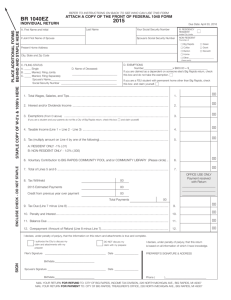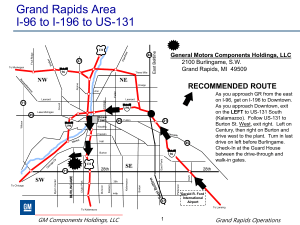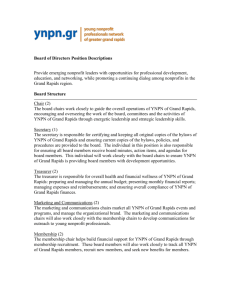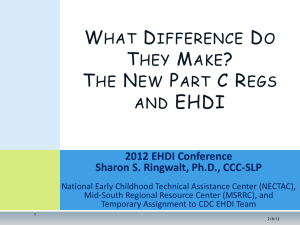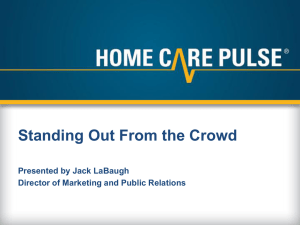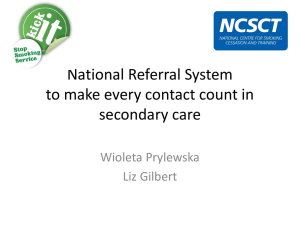RAPIDS-final.ppx - The Reintegration Puzzle
advertisement
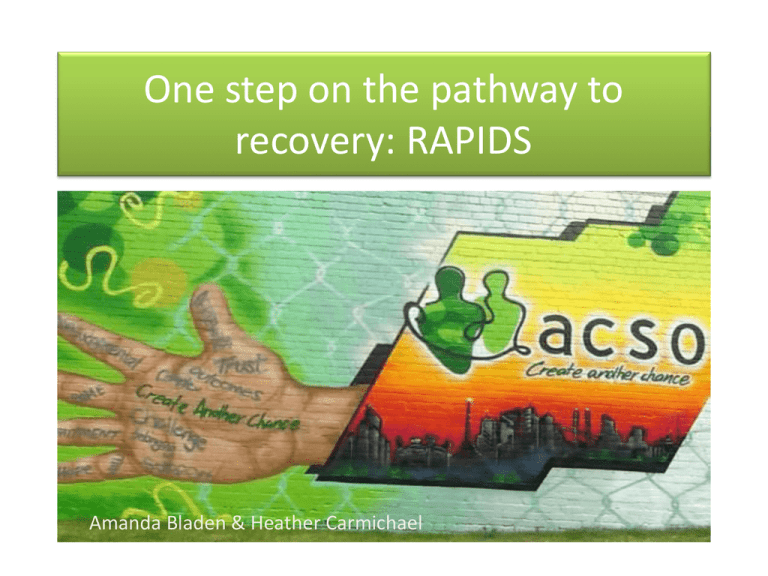
One step on the pathway to recovery: RAPIDS Amanda Bladen & Heather Carmichael RAPIDS RAPIDS stands for Responsive Assessment Planning, Intervention and Diversion Service RAPIDS clients are people ... whose substance use is placing themselves and or others at risk who are active users, with a long history of problematic substance abuse, men, women... glbt, both young and old, who can have co-occurring conditions, including Acquired Brain Injury; intellectual disability; mental illness and physical conditions, with poor social connectedness including lack of family supports and social isolation, but who may have roles and responsibilities as carers, partners, parents, who are likely to have a history of instability e.g. housing, education, employment and/or relationships. (art by Catherine Bladen and Rebecca Bladen) It was recognised that those most in need of the services we provide often found the process of navigating our systems too challenging.... Evidence for the RAPIDS approach... Along with literature reviews we incorporated practice evidence from other agencies, expert practitioners and important others, such as our consumer advisory group and carer perspectives... We found that for high risk clients with significant drug and alcohol needs, who might not otherwise engage in treatment, there were strong indicators and evidence of the need to provide timely court based assessment, access to brief intervention outreach services and care planning, diversion and referral. Evidence supports the use of rapid, responsive assessment and brief intervention treatment approaches. Baker et al., 2001; Copeland et al., 2001; Stephens et al., 2000; Saunders et al., 1995) The evidence for bridging support and brief intervention We found that the efficacy of brief interventions is well established and is enhanced by the provision of: • Instant link between courts and AOD service process • Initial bridging treatment/ brief intervention • Tailored care planning, referral and diversion and facilitated supported engagement (Baker et al., 2001; Copeland et al., 2001; Stephens et al., 2000; Saunders et al., 1995) Brief interventions can provide both stand alone short term assistance and be an important first step (Breslin, Curtis; Li, Selina; Sdao-Jarvie, Kathy; Tupker, Elsbeth; Ittig-Deland, Virginia) Brief interventions have a strong potential to prevent harm: are widely recognized as being cost-effective and an important part of the overall approach to responding to people with AOD problems (Crime Delinquency. 2006; 52(1): 52–76. doi: 10.1177/0011128705281746; Higgins-Biddle & Babor 1996:4; www.health.gov.au/internet/alcohol/publishing.nsf); Collaboration, consultation and liaison: creating a shared understanding problem • There was an urgent need for reform but we did not want to put in a reactive/ knee jerk response to a complex situation: we had a short time frame and wanted a right fit response consultation • Meetings to establish common language, understandings and expectations with the funding bodies: robust discussion and differing viewpoints and perspectives and a willingness to challenge underpinned the process Response & plan • We had to do the best within available resources: due to funding constraints and high demand our vision for a well funded pilot became a less well funded state wide program Implement and review • Service consultation and supported change management were critical to the process...The change prompted us to look at other process differently- for example our CAG group provided ruthlessly constructive brochure feedback ! The Model Model The • • • • • Intake Same Day Assessment Verbal and Written feedback Bridging Support Brokerage Client Client Recovery Recovery Pathway Pathway Referral in to RAPIDS Assessment by RAPIDS worker with program planning Bridging support and active liaison and linkage in to the referral agency “Bridging Support” We go to the client, enabling rather than enforcing bureaucratic obstacles Bridging Support allows RAPIDS assessors to provide the following types of support to our clients: Motivational Interviewing to build rapport quickly, approach behaviour changes and treatment readiness Advocate and provide additional support and referral to community agencies Provide some material aid including: Myki tickets, Woolworths gift vouchers, Pre-paid mobile phones, food parcels provided by “the ACSO Pantry” & clothing donated through “Pass It On” Workforce Skills and Attributes • Works with the client to instill hope, facilitate a recovery approach and a sense of potential mastery and control • Understanding of Justice System • Motivational Interviewing • lived experience • Empathy and compassion • Negotiation • Assessment skills • Reflective Practice Behind Scenes Assessor Behind theThe scenes forFor the assessor Liaison with courts, referrers, other agencies to meet broader client needs Bridging support with client Referral and liaison to agencies and brokerage of services via CSU TheRAPIDS RAPIDS assessor assessor role The role Case Case Study Study Corrections Referral • Simon – 39 year old male • Substantial history of substance abuse since the age of 18 years • Mental Health/ ABI • Community Corrections Order imposed • Previous attempts at treatment were unsuccessful, past breaches • Recent relapse into heroin Any Question, Comments or Any Questions? Feedback?


